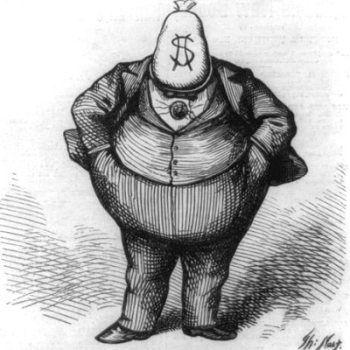"Boost Those 401(k) Contributions" advises Albert B. Crenshaw in a Washington Post article that my paper will be running on Sunday:
Millions of workers around the nation can sock away bigger nest eggs in their 401(k) and similar retirement savings plans in 2004, thanks to tax-law changes of recent years. And workers 50 and older can put away even more.
The 2001 tax cut loosened the restrictions on 401(k) plans, allowing many workers to boost contributions sharply, and easing the rules on employers so that better-paid workers are less likely to run afoul of antidiscrimination requirements.
For 2004, workers can dump as much as $13,000 into their plans, and those 50 and older can toss in another $3,000, for a total this year of $16,000.
Do you hear this, you millions of workers out there? You can now "sock away" $13,000 a year in your retirement savings. You now have permission to do this. So what are you waiting for? Take that extra $13,000 that you millions of workers have just lying around in need of tax-sheltering and sock it away!
Crenshaw does eventually get around to the following admission in his ninth paragraph:
The effect for most middle-income families is that tax-preferred saving for retirement and a variety of other purposes will be limited more by their ability to spare the cash than by ceilings in the law.
Ah, yes, that other limit on most workers' ability to "sock away" thousands of dollars for retirement. You know, reality. The vast majority of the millions of workers in this country won't be taking advantage of this new $13,000 ceiling because they are not wealthy enough to do so.
So who exactly is this change supposed to benefit?
Consider that the federal government is on pace to post another largest-ever deficit this year, which means these tax cuts and increased shelters will be funded by money intended to ensure the future solvency of Social Security. With that in mind, the increased 401(k) contribution limits look suspiciously like a lifeboat for the first class passengers to escape in while the rest of us — those millions of workers who don't have an extra $13,000 to spare — go down with the ship.
Crenshaw's offensive and inaccurate use of the word "can" in his opening sentence is echoed in the reporting I've seen on other dubious new benefits, such as the "Health Savings Accounts." HSAs seem designed to subsidize high-deductible health insurance and the customers who can afford to rely on them by allowing taxpayers to put $2,500 to $4,500 a year into a tax-free HSA. Millions of workers can take advantage of this for considerable savings (both on taxes and on the cheaper-to-begin-with, and now subsidized high-deductible insurance) — all they need is few thousand dollars to spare.
In The Christian Science Monitor, David Callahan writes of The myth of the populist stock market":
At the height of the boom, however, the bottom three-quarters of American households owned less than 15 percent of all stock. Barely a third of households hold more than $5,000 in stock. Most Americans have more debt on their credit cards than money in their mutual funds.
Consider that last sentence again:
Most Americans have more debt on their credit cards than money in their mutual funds.
Crenshaw's article — like the majority of "business" and "personal finance" journalism — seems utterly irrelevant for a nation in which this is true.
Most Americans have more debt on their credit cards than money in their mutual funds.
A tax-cut plan that increases 401(k) contribution limits beyond the means or dreams of the majority of workers is irrelevant and regressively redistributive in a nation in which this is true.
Most Americans have more debt on their credit cards than money in their mutual funds.
Write that on postcards and send it to your representatives and your local paper. Scream it back at the television. Spraypaint it on a wall.












